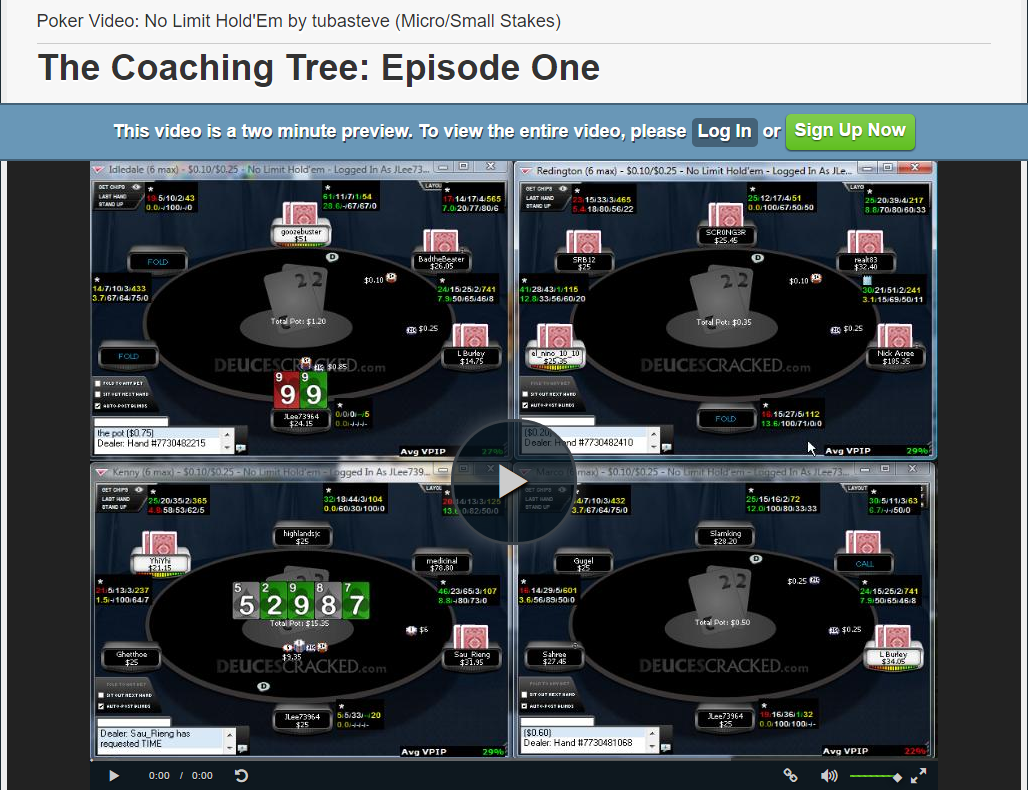National tournament of champions, No limit holdem, Texas Holdem, world series of poker free play, world tavern poker, WSOP world tavern poker, WSOP event chance 3 WSOP Free NL hold em tournament poker training!
Mason MalmuthTwo Plus Two Magazine, Vol. 8, No. 12- General Guidelines
- Seven Card Stud
- Limit Texas Hold'em
In Texas hold ’em, a small flat disk, called a “button,” is used to indicate the dealer position. Prior to the cards being dealt, the first player to the left of the dealer position posts a small blind, and the second player to the dealer’s left puts up a big blind, which usually is equal to the first-round bet. Blinds are “live” bets, which signifies two things. First, a blind is a “real” bet, and to enter the pot, a player in a blind position needs only to make up the difference, if any, between his blind and the current bet. Second, players in the blinds have the option of raising when the action gets back to them even if there has been no prior raise. When each hand is completed, the dealer button is moved one position to the left, and the procedure of posting blinds is repeated, so everyone pays his fair share.
To start the hand, each player, beginning with the small blind, receives two cards dealt face down one at a time. Action is initiated on the first betting round by the player to the immediate left of the big blind, who has the options of discarding his hand, calling the big blind, or raising an equivalent amount. The action moves clockwise in this manner until all players have exercised their options and all bets have been called. On all subsequent betting rounds, the first active player to the left of the dealer button starts the action.
After the first round of betting is completed, three cards — referred to as “the flop” — are turned face up simultaneously in the center of the table, and another round of betting occurs. The next two board cards — specified as either fourth street and fifth street or the turn card and the river card — are then dealt face up one at a time in the center of the table, with a betting round after each card. As noted previously, these board cards are community cards and are shared by all active players in the hand.
At the showdown, the player who makes the best five-card poker hand, using any combination of the five cards on board and the two cards in his hand, wins the pot. In Texas hold ’em, more than one player often will have the best hand. When this happens, the pot is split.
Fixed-limit hold ’em games have a two-tiered betting structure, with the lower limit used in the first two betting rounds and the higher limit (which is usually double the lower limit) used in the final two rounds of betting. As an example, suppose you are playing in a $3-$6 hold ’em game. The first player to the left of the dealer position will put in a $1 small blind, and the second player to the dealer’s left will post a $3 big blind. On the first round of betting, the player to the immediate left of the big blind will have the options of discarding his hand, calling the $3 big blind, or raising $3, for a total bet of $6. Subsequent bets and raises both before the flop and on the flop will be in $3 increments. All bets and raises on fourth and fifth streets must be in $6 increments.
Free No Limit Poker Games
Many low-stakes Texas hold ’em games are also played with spread limits which means that any player has the option of betting or raising an amount that is not fixed. For instance, in a typical $1-$4-$8 spread-limit hold ’em game, there will be either two $1 blinds or one $2 blind. The first player to the left of the blind(s) can fold, call the blind, or raise any amount from $1 to $4. Subsequent bets and raises on the first three betting rounds can be from $1 to $4 at the player’s discretion. Bets and raises on the final round of betting can be any amount from $1 to $8.
Many cardrooms throughout the country award jackpots in Texas hold ’em games as well as in seven-card stud games. The procedure used for seeding the jackpot pool and the tips for playing in a hold ’em game that offers a jackpot are the same as those given previously in the section on seven-card stud.

Poker Strategy and Other Topics - November 2019
Free Hold Em Poker
by Carlos Welch
by Robert Samuels
by Kevin Haney
by Kevin Haney

by Ben Saxton
by Bryan Clark
by Felipe Garcia, CFA and Aaron Byrd, CFA
by Nick Willett
by Mason Malmuth